Giant plankton gains long-due attention
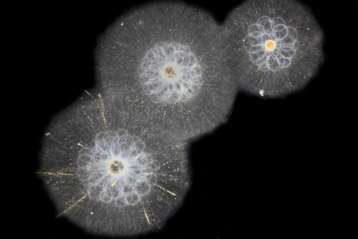
A team of marine biologists and oceanographers from CNRS, UPMC and the German organization GEOMAR have revealed the importance in all the world's oceans of a group of large planktonic organisms called Rhizaria, which had previously been completely underestimated. According to their findings, these organisms make up 33% of the total abundance of large zooplankton in the world's oceans, and account for 5% of the overall marine biomass. The study was carried out on samples collected during eleven oceanographic campaigns (2008-2013) covering the world's main oceanic regions, and included the Tara Oceans expedition. It is published on 20 April 2016 on the website of the journal Nature.
Although invisible to the naked eye, marine plankton play a key role in the balance of our planet. Still largely unexplored, they consist of an astonishingly wide variety of tiny organisms that produce half the Earth's oxygen and form the base of the oceanic food chain that feeds fish and marine mammals. Rhizarians, from their Latin name Rhizaria, are a group of large planktonic organisms whose importance had been overlooked until now. Most estimates of the distribution of marine organisms are performed locally (in a defined marine area) and are based on collection with plankton nets. However carefully carried out, this operation can damage certain fragile organisms such as rhizarians, preventing their identification.
Marine biologists and oceanographers have pooled their skills with the aim of analyzing samples collected during eleven oceanographic campaigns from 2008 to 2013, using a less destructive method, namely an underwater camera deployed at depth. This in situ imaging system, which involved no collection, was used to study the organisms directly in their environment without damaging them. In all, sampling was carried out at 877 stations (corresponding to 1 454 immersions of the camera down to 1 500 meters), covering the world's main oceanic regions. In total, the scientists analyzed 1.8 million images in order to quantify the abundance and biomass represented by Rhizaria.
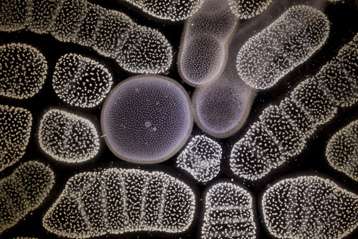
The results were surprising: their estimates unequivocally show that Rhizaria make up more than a quarter of the total abundance of the world's large zooplankton. They also found that they account for 5% of the total biomass in the oceans (taking into account all organisms, from plankton to whales). The presence of Rhizaria in all the planet's oceans had previously been completely overlooked. However, they are unevenly distributed: these giant plankton are predominant in the nutrient-poor regions (located at the center of the large oceans) that cover most of the ocean area. This distribution could be explained by Rhizaria's ability to live in association (symbiosis) with microalgae, just like coral. In symbiosis, the partnership between organisms is based on mutual exchange of food: by directly benefiting from the products of photosynthesis, Rhizaria are able to survive in nutrient-deficient waters. Plankton are gradually giving up their secrets, unveiling unsuspected wealth and diversity.
-
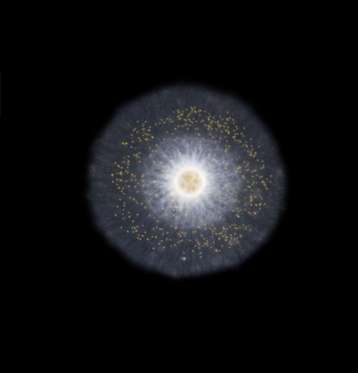
A large solitary rhizarian (Rhizaria) (around 0.5 cm) seen through an optical microscope. The small yellow dots seen around the periphery of the organism's cell are symbiotic algae. Credit: Tristan Biard, Station biologique de Roscoff (CNRS/UPMC) -
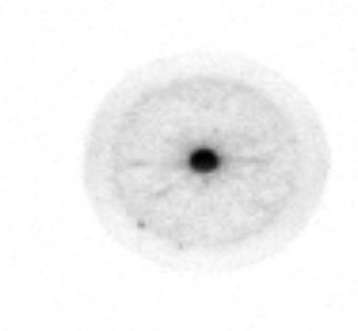
A large solitary Rhizaria (around 0.5 cm) detected and imaged in its environment using an underwater camera deployed at depth. Credit: Tristan Biard, Station biologique de Roscoff (CNRS/UPMC) -
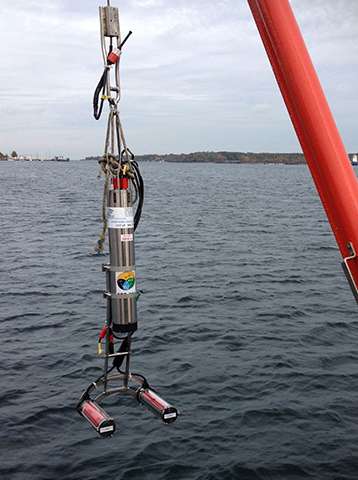
Deployment of the underwater camera used in this study. Credit: Rainer Kiko, GEOMAR
More information: Tristan Biard et al. In situ imaging reveals the biomass of giant protists in the global ocean, Nature (2016). DOI: 10.1038/nature17652
Journal information: Nature
Provided by CNRS





















